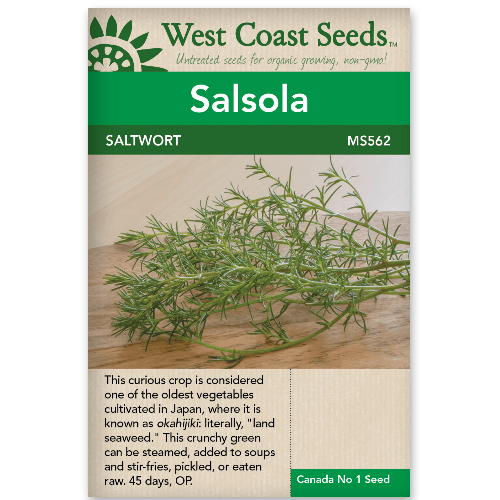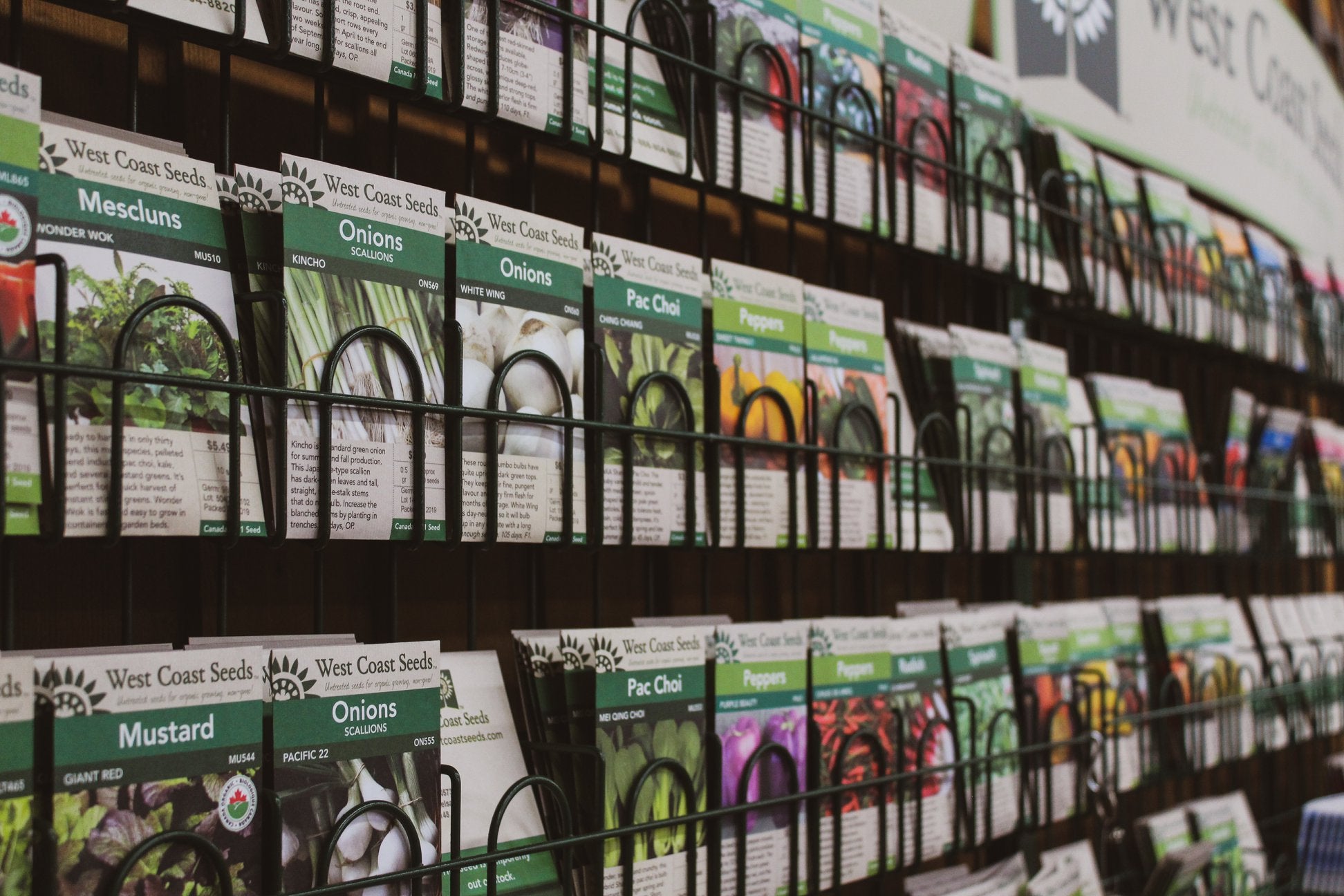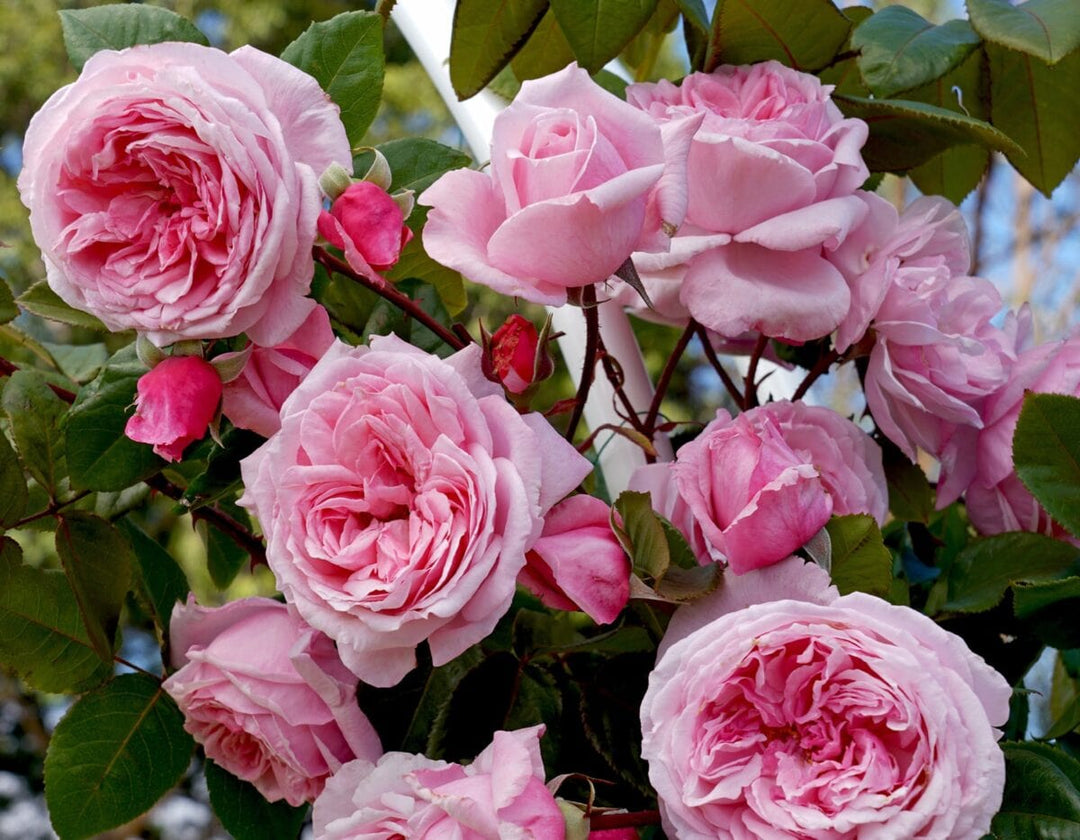
Salsola Saltwort - West Coast Seeds
- Canada-Wide Shipping
- Flat Rate Shipping on Seeds
- Secure Payment & Checkout
- In stock, ready to ship
- Backordered, shipping soon
Salsola komarovii
- Ancient Japanese heirloom
- Also known as Saltwort
- Pleasantly crunchy
- Mild flavour
Largely unknown in the west, this curious crop has its roots in east Asia. It is considered one of the oldest vegetables cultivated in Japan, where it is known as okahijiki — literally, "land seaweed." This name refers to its resemblance to seaweed, with its tubular stems and leaves, and springy, upright stature. It also occurs naturally in salty soils, so it may be found quite near the sea. Salsola (also known as Saltwort) has the ability to draw salt out of soil, and when it does, its own flavour becomes salty. Otherwise its taste is quite neutral, but it absorbs other flavours well. It was a popular hit in our field trials due to its pleasantly crunchy texture. Salsola can be steamed, added to soups and stir-fries, pickled, or eaten raw. Salsola seeds need a bit of extra heat to germinate, so use a seedling heat mat. Once germinated, the plants are easy to grow annuals that can be harvested from June to October. Harvesting does not slow the growth down, so one or two plants may be enough for the average family.
Matures in 45 days. (Open-pollinated seeds)
0.25g (Approx. 70 seeds)
Seed every three weeks from March to September for a continuous harvest. Provide frost protection with a cloche or heavy row cover starting in late October, and many mesclun types and mixes will continue to grow all winter.
Plant in a block or in a wide row. Sprinkle the seeds evenly over prepared, moist soil. Try to space seeds about 1cm (½”) apart. Cover lightly with soil, and firm them in. Four grams of seed will plant a 12m (40′) row that is 7cm (3″) wide, so don’t plant the whole packet at once. For container growing, choose containers that are at least 10cm (4″) deep. Wider is better. The most common mistake is over-planting.
Moderately fertile soil – particularly if you’re planning mutliple harvests. Dig in 1 cup of complete organic fertilizer for every 3m (10′) of row. For containers, use peat or coir based mix with compost added. Water regularly. If growth slows after harvest, use a bit of kelp or fish based fertilizer to provide a boost of nutrition for the next growth spurt.
There are two methods of gathering salad greens. You can use scissors to cut everything about 2-5cm (1-2″) from the ground, when the plants are about 10-15cm (3-4″) tall. Or, you can pick individual leaves as they’re needed. The first cutting may contain more brassicas than lettuces (arugula, mizuna) but if you cut the mix back when the leaves are still small, the lettuce will catch up. The salad greens will regrow for a second harvest in another 2 or 3 weeks.
Slugs love baby greens and flea beetles love brassica leaves.
Canada Shipping
All regular packaged seed* orders have a flat rate shipping fee starting at $6.85 for Letter Mail shipping and $14.85 for Expedited Shipping.
*Some Bonus Packs, Sprouting Seeds, Bulk packs, Sprinkle Bags, and Sprinkle Cans will only be available with Expedited Shipping due to larger packaging and weight.
US Shipping
US Shipping has been suspended indefinitely. We apologize for any inconvenience this may cause. We hope to serve our US customers again in the future.






